What is a chiminea and how do you use it? The experts explain
What is a chiminea? Get to grips with these gorgeous outdoor heaters and warm up your backyard

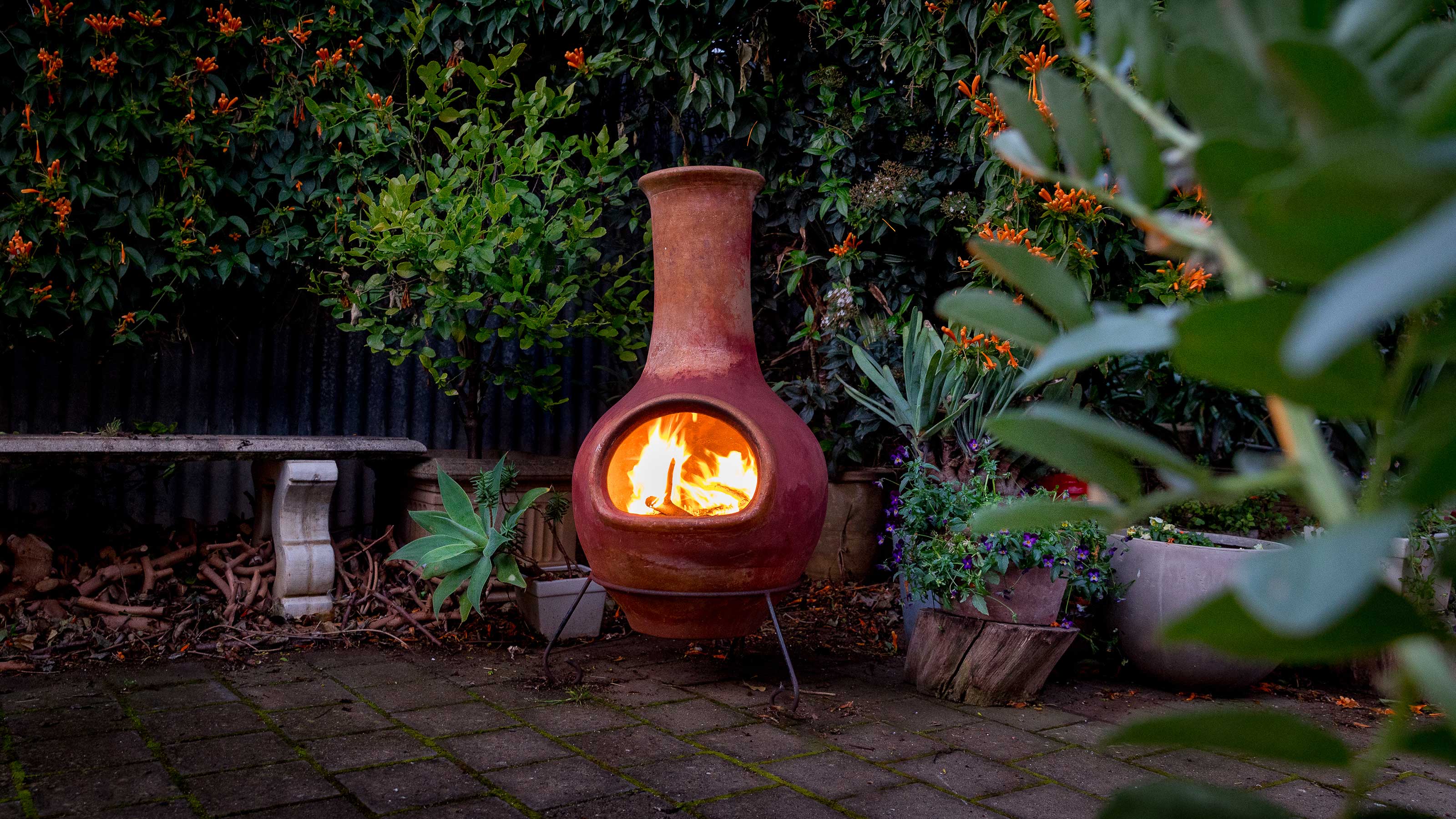
What is a chiminea? These outdoor products are a wonderful freestanding source of heat, either as a fire to relax in front of, or as an oven to cook on.
Traditionally, a chiminea is made from clay or terracotta, though you'll see many made from iron and stainless steel, too. It has a wide base that leads upward to a narrow chimney that smoke rises through.
Nowadays, the best chimineas are those made from cast iron or cast aluminum, as they will withstand much hotter temperatures than clay and last for many years. That said, the aesthetic appeal of a terracotta clay chiminea makes them a beautiful addition to more rustic schemes.
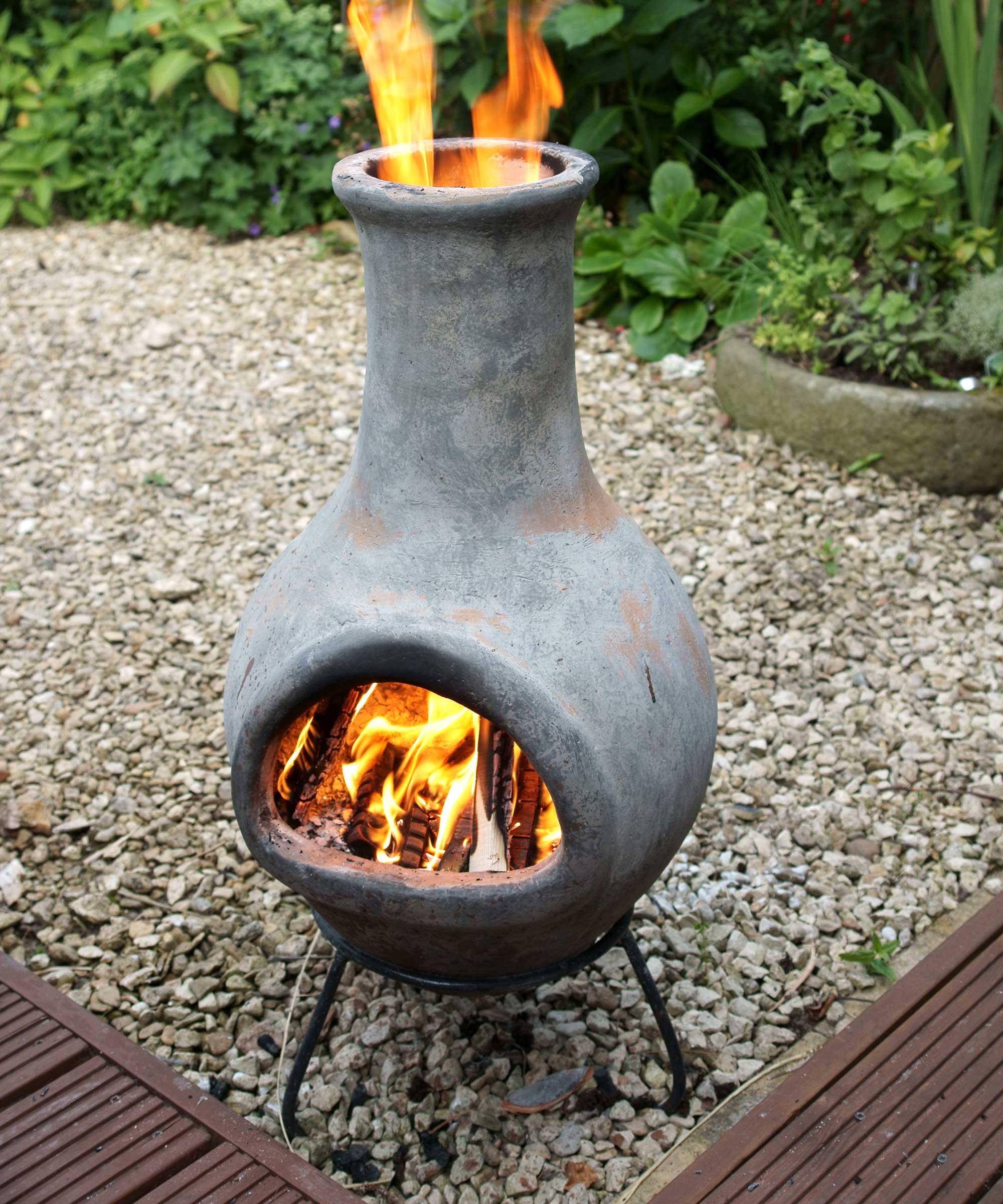
How is a chiminea different to a fire pit?
It's easy to assume that a chiminea and a fire pit are basically the same, but there are a few key differences between the two.
A fire pit is an open source of heat, with no chimney through which to direct smoke. They are often cheaper and lighter than chimineas, says the experts at Gardeco. The latter means they are easier to move.
Another benefit of the best fire pits is the 360° view of the fire itself – although this can also mean sparks and flames are more likely to get out of hand. A chiminea allows for a much more controlled burn than a fire pit, thanks to the intentional design of the vertical smoke stack and enclosed fire bowl.
Chimeneas also provide more heat. 'A chimenea absorbs the heat of the fire and by radiation and convection, warms the immediate surroundings,' explains Gardeco. 'The process is the same whether clay or cast iron. The larger the chimenea, the better the heating effect.' As fire bowls are open, the heat will dissipate into the air immediately with little convected heat distribution, they add.
Wayfair's Resident Style Advisor, Nadia McCowan Hill, explains that chimineas are a great option for smaller spaces because they take up less room than a fire pit. 'They’re perfect for a designated area and especially for cozy and intimate gatherings,' she says.

How to use a chiminea
A chiminea's base is usually pretty small, so plan for your firewood accordingly and don't build a bonfire! They require only small amounts of fuel and should be given small chunks of wood to burn. Never use flammable liquids or gasoline.
Lighting a chimenea is even easier than lighting a fire pit. 'Due to the enclosed belly design of chimeneas, wind and rain is kept away from the fire and thus it is very easy to light the fire in a chimenea,' says Gardeco. 'Similarly, the airflow through the mouth, onto the fire, and out of the funnel creates a perfect draw, so that chimeneas have superior combustion characteristics.'
It's important to choose the best type of fire wood when using a chiminea, and one of the key factors is it must be dry, otherwise it'll smoke excessively when burnt.
'The recommended fuel to use in chimeneas and fire bowls is dry wood, or, if cooking, charcoal,' says Paul Harris. 'Coal is not recommended as fuel in clay chimeneas because it is likely to crack the clay due to the heat produced during combustion, although coal can be used in cast-iron chimeneas.'
Lighting a chiminea can be done in four simple steps:
- Clean out the inner chamber of any debris and old ashes before starting to build up your kindling.
- Cover the bottom of the chiminea with at least five inches of sand, gravel or lava rock. This protects the base from coming into contact with fire – crucial if you're using a clay chiminea, otherwise the clay can crack. Using sand also helps reduce the amount of smoke that billows out.
- If desired, you can place two bricks at either side of the base to keep the wood elevated, or use a small metal rack.
- Place kindling at the center (plus a natural fire lighter, available from Amazon, for easier lighting). Build up your larger pieces of wood around the kindling, then light the kindling.
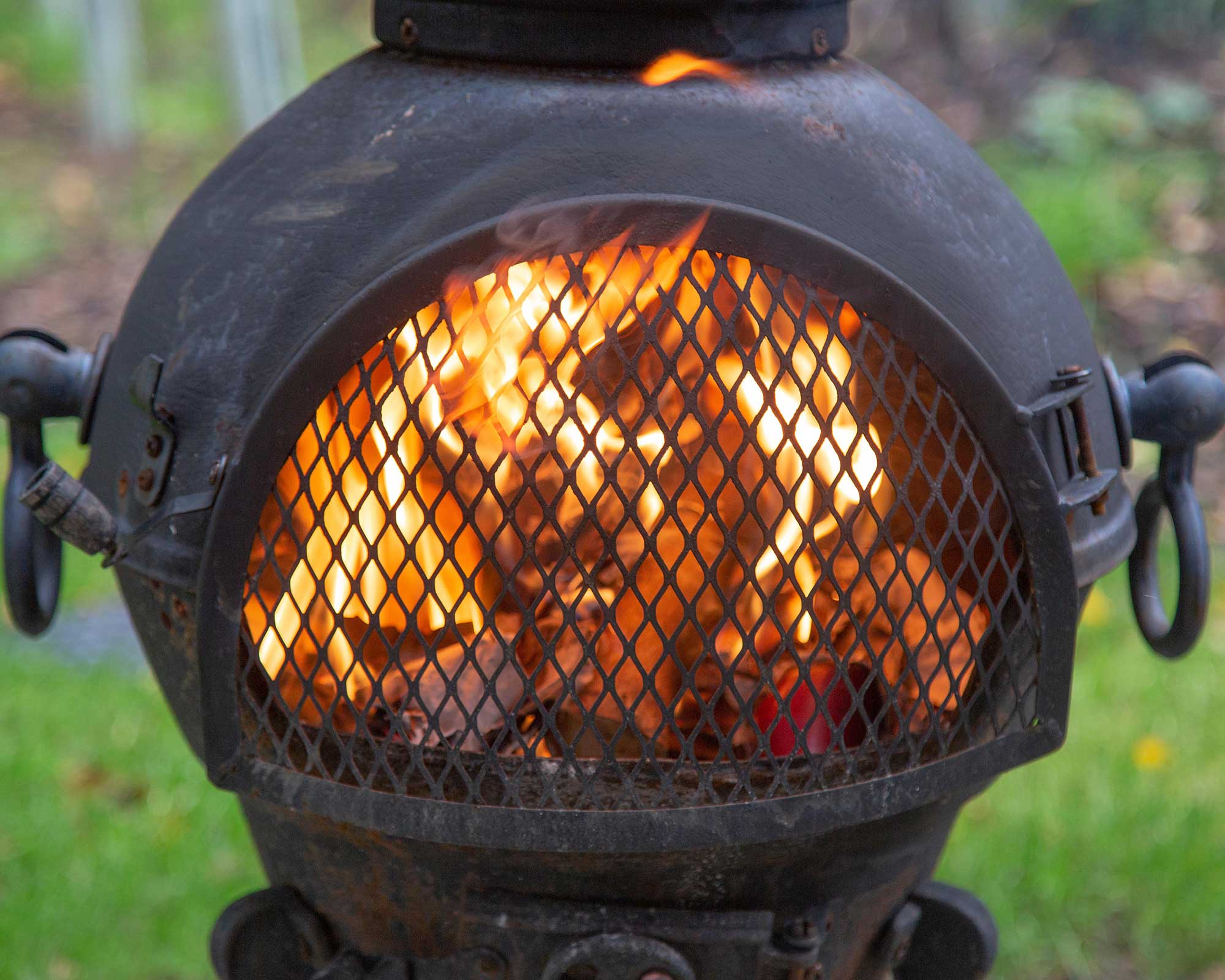
Can you cook on a chiminea?
Cooking on a fire pit is a wonderful outdoor activity, and chimeneas can be just as easily used for doing so. 'You can buy options with inbuilt grilling surfaces, making them ideal for toasting up a tasty treat,' Nadia says.
'Charcoal should be used when cooking on a chimenea,' says Paul Harris of Gardeco. 'Never attempt to cook on yellow flames; this will contaminate food with carcinogenic compounds, resins and black soot.'
Alternatively, it is safe to cook when a wood fire is reduced to glowing ash as the carbon content is consumed, which is similar to using charcoal, he says.
'Do not cook on scrap pallet wood; often these have been treated with toxic preservatives.'

What can you not do with a chiminea?
Because of their intense heat, there are some fire pit safety tips you'll need to bear in mind when using a chiminea.
- Only use a chiminea outdoors, and ensure there is at least 10 feet of clear distance from anything flammable in every direction. Be aware of items that could be damaged from the heat too, like vinyl fencing.
- When a chiminea is lit, keep the lid off. If a fire is lit and the smoke is enclosed with no way to escape, this can cause the chiminea to overheat and potentially cause damage.
- Never leave a chiminea unattended while it's in use. This is a source of intense heat and will continue to radiate that heat outwards even after the fire has been completely extinguished.
- Don't leave your chiminea unprotected from the elements if you want it to last. Cover the cool chiminea if rain is forecast – there are plenty of waterproof chiminea covers available, like this sturdy cover on Amazon.
Tempted by a chiminea of your own? Here are some of our top picks to buy:
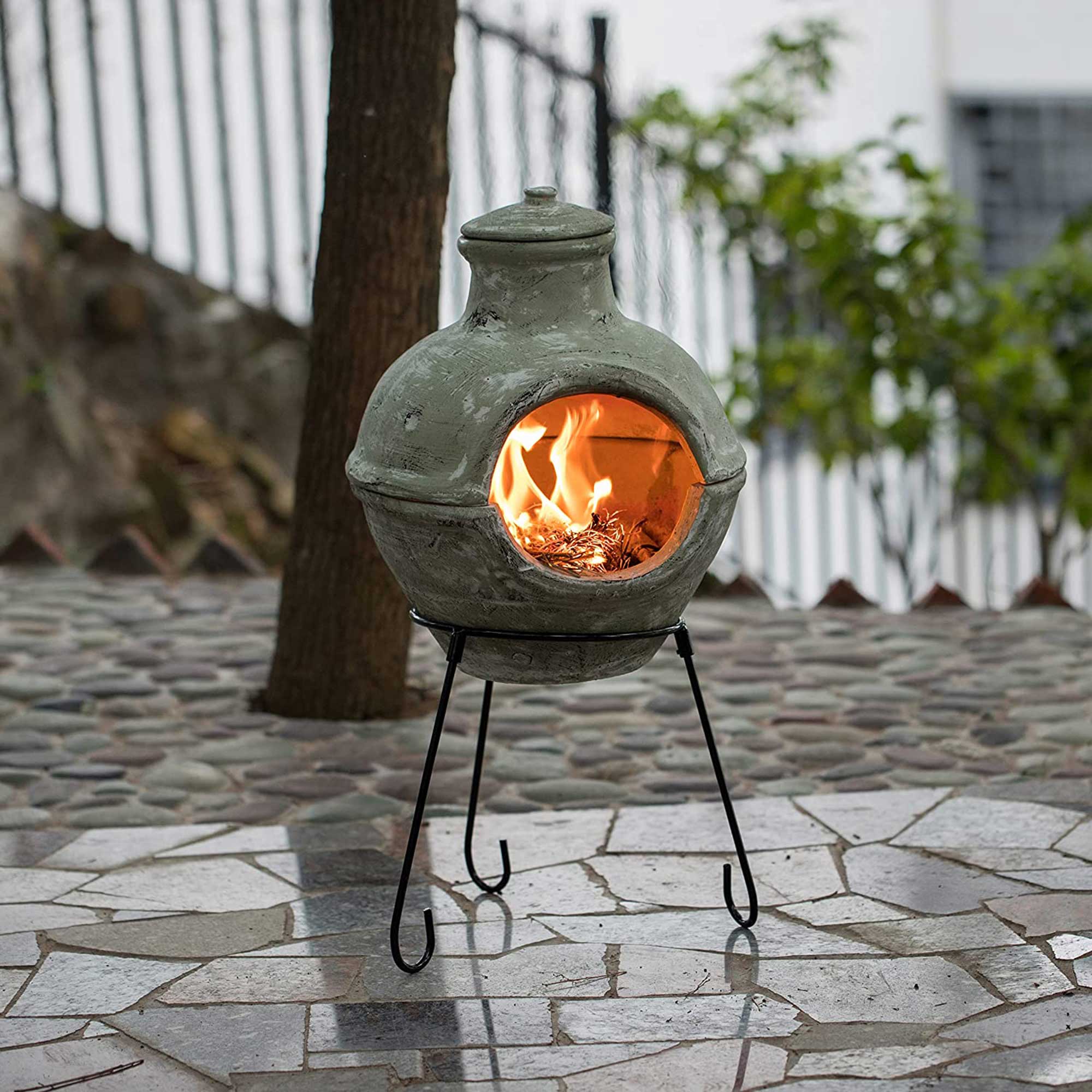
This compact, traditionally-inspired, clay chiminea is perfect for a patio. The metal stand elevates it and makes it a gorgeous decorative centerpiece for gatherings with friends and family.
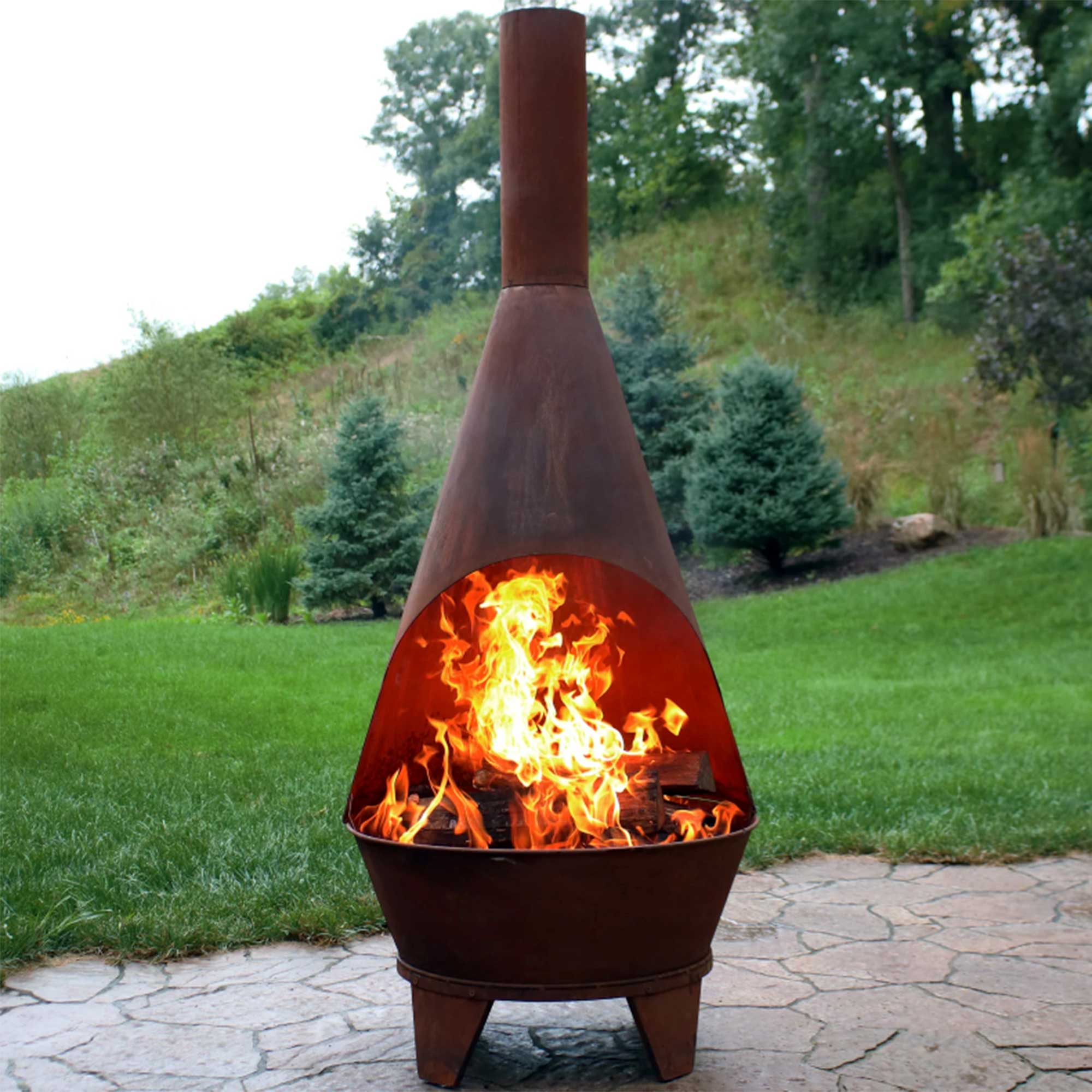
Why not go for a modern feel with this beautifully burnished steel chiminea from Wayfair? The metal is designed to fade when exposed to inclement weather, and at a height of 75", it's a wonderful statement piece.
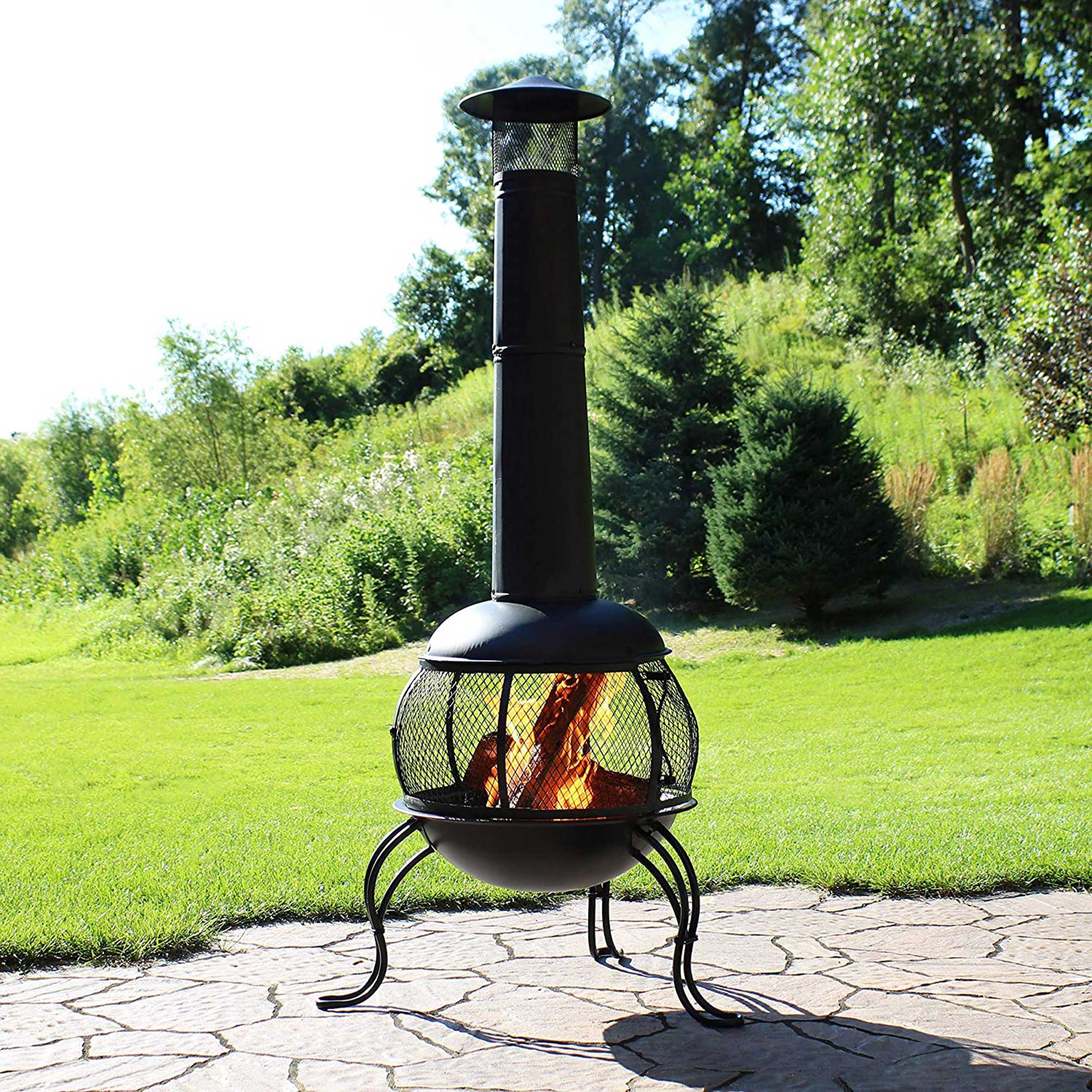
Sleek and stylish, this chiminea's 360° mesh grate covers your merrily burning fire, maximizing the heat emitted, while the tall chimney encourages smoke to travel upwards instead of out.

Freelance writer and author Flora Baker is a keen amateur gardener and houseplant enthusiast. Her small garden in South London is a constant work in progress as she gets to grips with snail prevention, DIY trellises and what to plant in shady spots overrun with ivy.
